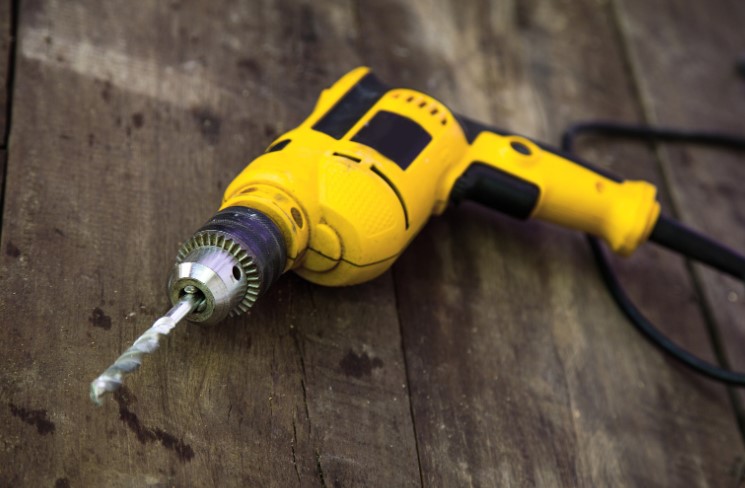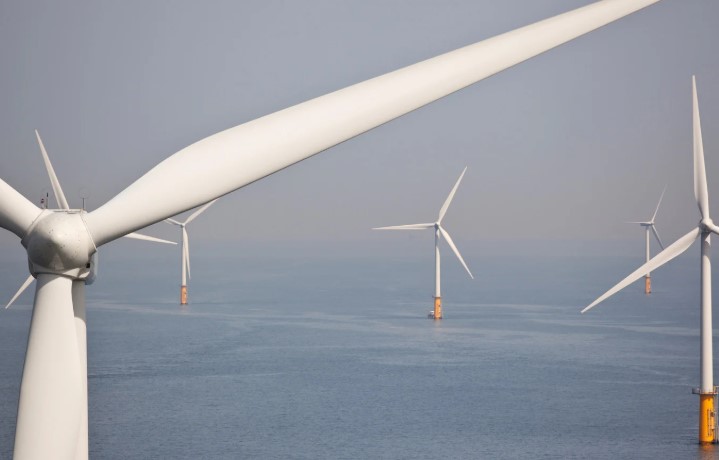- An Electric Drill Has Energy in Its __________ Energy Store When It Is Rotating.
- What Does It Mean for a Drill to Have Energy in an Energy Store?
- What Type of Energy Store Is Present When an Electric Drill Is Rotating?
- How Does an Electric Drill Transform Energy?
- Why Is It Called a Kinetic Energy Store?
- What Are the Other Types of Energy Stores in Physics?
- Why Is Understanding Energy Stores Important?
- Common Misconceptions Students Have
- Conclusion: Understanding Energy in Motion
- FAQs About Energy in Power Tools
An Electric Drill Has Energy in Its __________ Energy Store When It Is Rotating.
The Answer is: Kinetic Energy Store
When an electric drill is rotating, it has energy in its kinetic energy store.
This is because the moving parts of the drill, especially the spinning drill bit, are in motion — and in physics, motion means kinetic energy.
What Does It Mean for a Drill to Have Energy in an Energy Store?
Before I dive deeper into why it’s called a kinetic energy store, let me explain what an energy store actually is.
In physics, an energy store refers to where energy is kept before or after a process.
It’s like a container — not a physical one, but a conceptual one — that helps us track how energy is being transferred or used.
When I plug in and switch on an electric drill, it draws electrical energy from the mains. But once it starts rotating, that energy is no longer in the electrical store — it’s transformed into movement.
That movement is where the kinetic energy comes into play.
What Type of Energy Store Is Present When an Electric Drill Is Rotating?
So, now we can answer the full question clearly:
An electric drill has energy in its kinetic energy store when it is rotating.
Why? Because kinetic energy is the energy an object possesses when it is in motion.
In this case, the spinning drill bit is the moving part, and that’s exactly what a kinetic energy store represents.
How Does an Electric Drill Transform Energy?
Let’s break down what happens, step-by-step:
- The drill receives electrical energy from the power source (battery or mains)
- This energy is converted into kinetic energy, as the motor turns and the bit begins to rotate
- Some of the energy is also lost to the surroundings as heat and sound
Here’s a simple breakdown:
Electrical Energy → Kinetic Energy + Sound Energy + Thermal Energy
This energy transfer shows that although the drill starts with electrical energy, the actual store of energy while it’s rotating is kinetic.

Why Is It Called a Kinetic Energy Store?
The term “kinetic” comes from the Greek word kinesis, meaning “movement.” So, anything that moves has kinetic energy.
In the case of my drill, the rotating bit, spinning motor, and moving components are all in motion — which means the drill stores energy in its kinetic energy store while operating.
Quick Physics Formula:
Kinetic Energy (KE) = ½ × mass × velocity²
This shows that kinetic energy depends on both the mass of the moving part (the drill bit) and its speed of rotation. The faster the drill spins, the more kinetic energy it has.
What Are the Other Types of Energy Stores in Physics?
Here’s a comparison table of different types of energy stores and their everyday examples:
| Energy Store | Example |
| Kinetic | Spinning drill, moving car |
| Thermal | Boiling kettle, radiator |
| Chemical | Batteries, petrol, food |
| Gravitational Potential | Water in a high tank |
| Elastic | Stretched elastic band |
| Magnetic | Magnets attracting each other |
| Electrostatic | Charged balloon sticking to a wall |
| Nuclear | Energy in atomic nuclei (e.g. nuclear power) |
This helps place the drill’s kinetic store in context — among many other types of energy storage we encounter in daily life.

Why Is Understanding Energy Stores Important?
When I began learning about energy stores, I found it helpful for both school physics and understanding how everyday objects work.
Recognising the difference between the type of energy input and the energy store helps me:
- Solve GCSE Physics problems more accurately
- Understand how tools and machines function
- Appreciate energy efficiency in appliances
Common Misconceptions Students Have
- “The energy store is electrical while the drill is rotating.”
The drill begins with electrical energy but once it’s in motion, that energy is stored kinetically. - “Sound and heat are energy stores.”
These are not stores. They are forms in which energy is dissipated and often wasted. - “If it’s plugged in, the energy must stay electrical.”
Plugging in provides the energy source, but the working energy store depends on what the drill is doing — in this case, rotating.
Conclusion: Understanding Energy in Motion
An electric drill has energy in its __________ energy store when it is rotating. And the answer is kinetic energy store.
This is because kinetic energy represents movement, and the rotating parts of a drill are exactly that — in motion.
Understanding energy stores like this not only helps me with physics exams, but also deepens my appreciation of the science behind everyday tools and machines.
Related article: What Carries the Useful Energy from a Lamp to Its Surroundings?

FAQs About Energy in Power Tools
1. Is kinetic energy the same as rotational energy?
Rotational energy is a form of kinetic energy. It specifically refers to the kinetic energy due to an object’s rotation — like the spinning of a drill bit.
2. Can a drill have more than one energy store at once?
Primarily, when it’s rotating, its energy store is kinetic. However, it also releases energy in the form of heat and sound, which are not stores but ways energy is dissipated.
3. Is electrical energy a store?
Electrical energy is a form of energy, but it’s not usually described as a “store” in GCSE Physics.
Instead, it’s seen as a means of transferring energy from one store to another — like from a battery (chemical store) to kinetic energy (drill in motion).


0 Comments